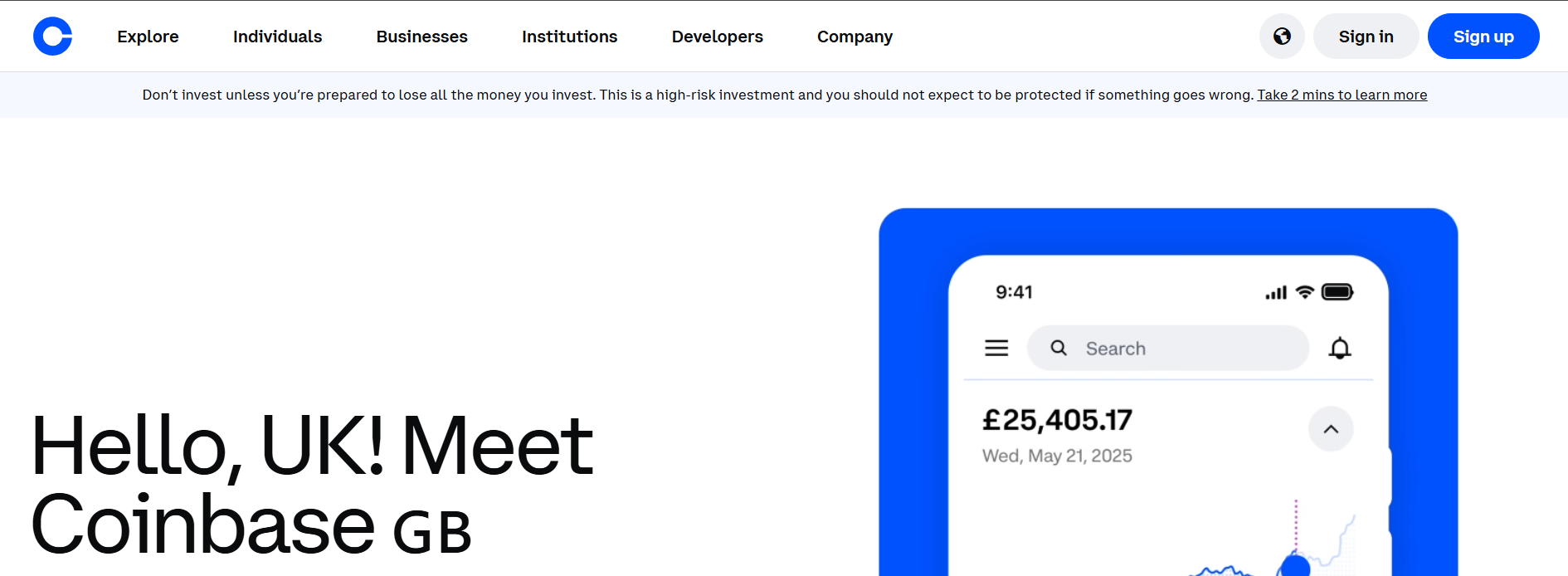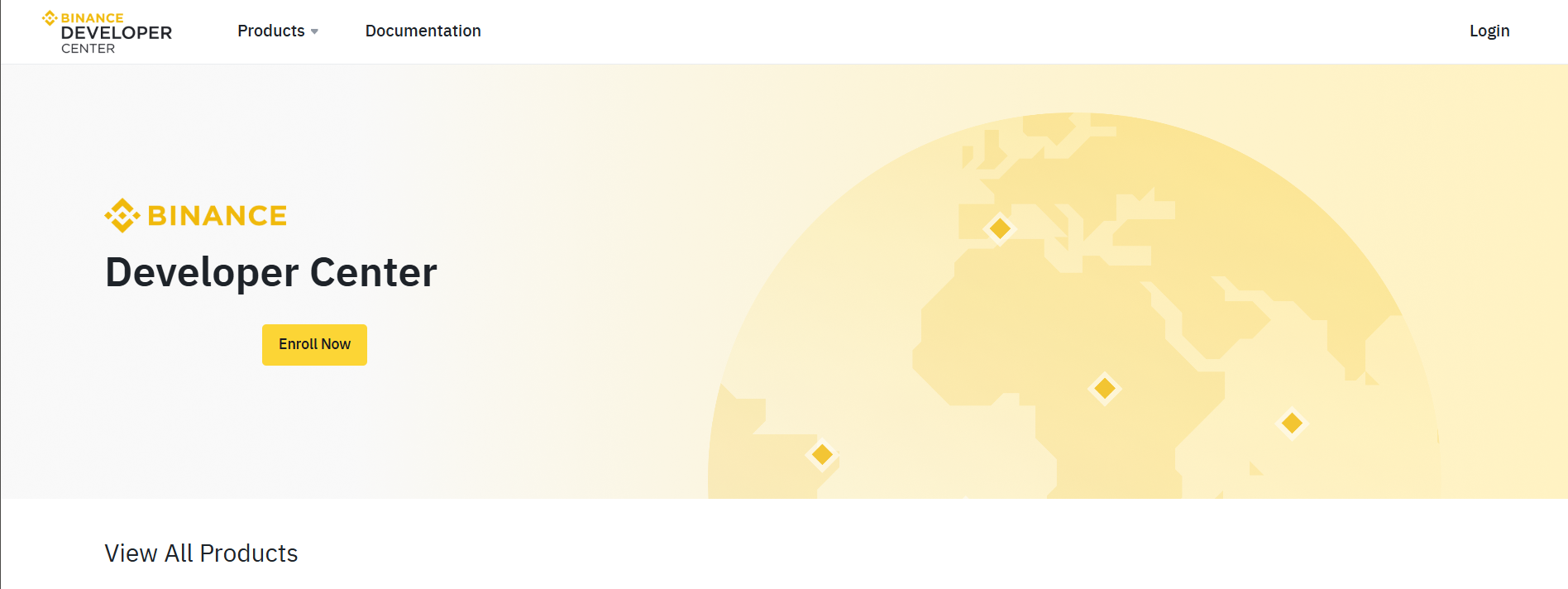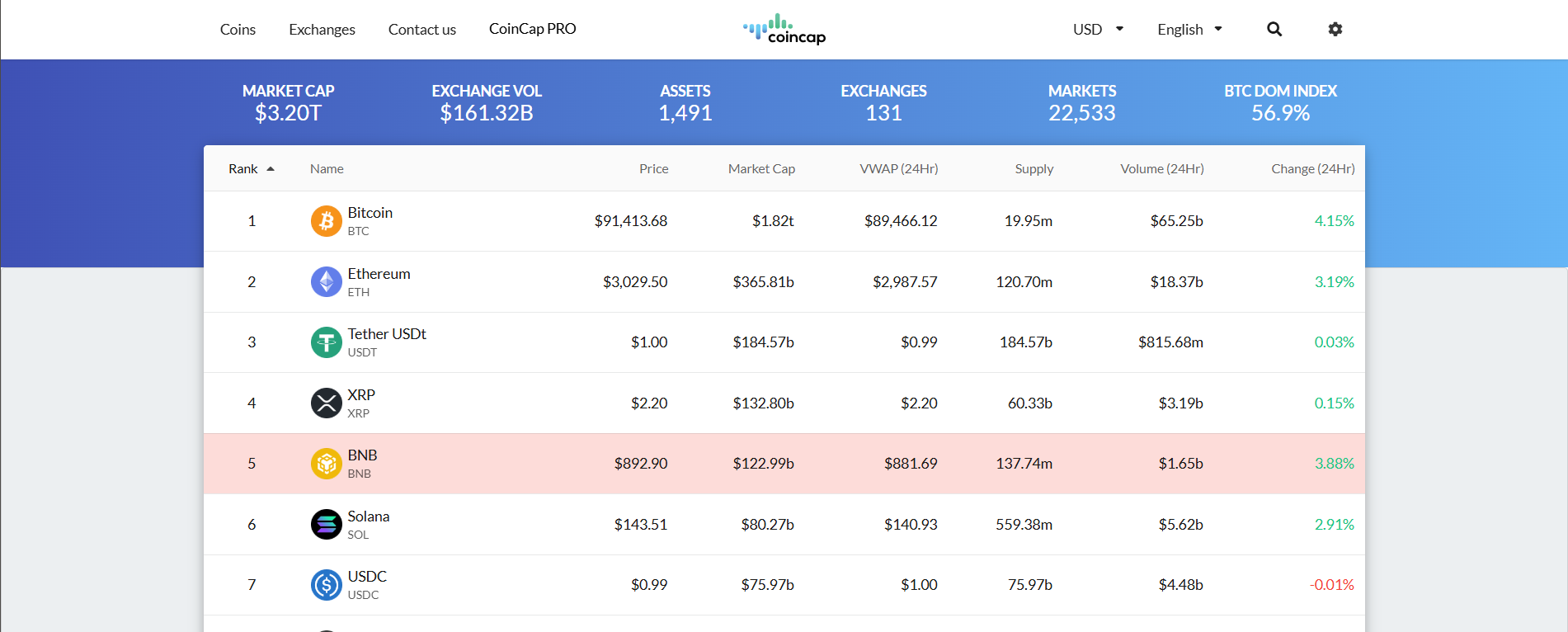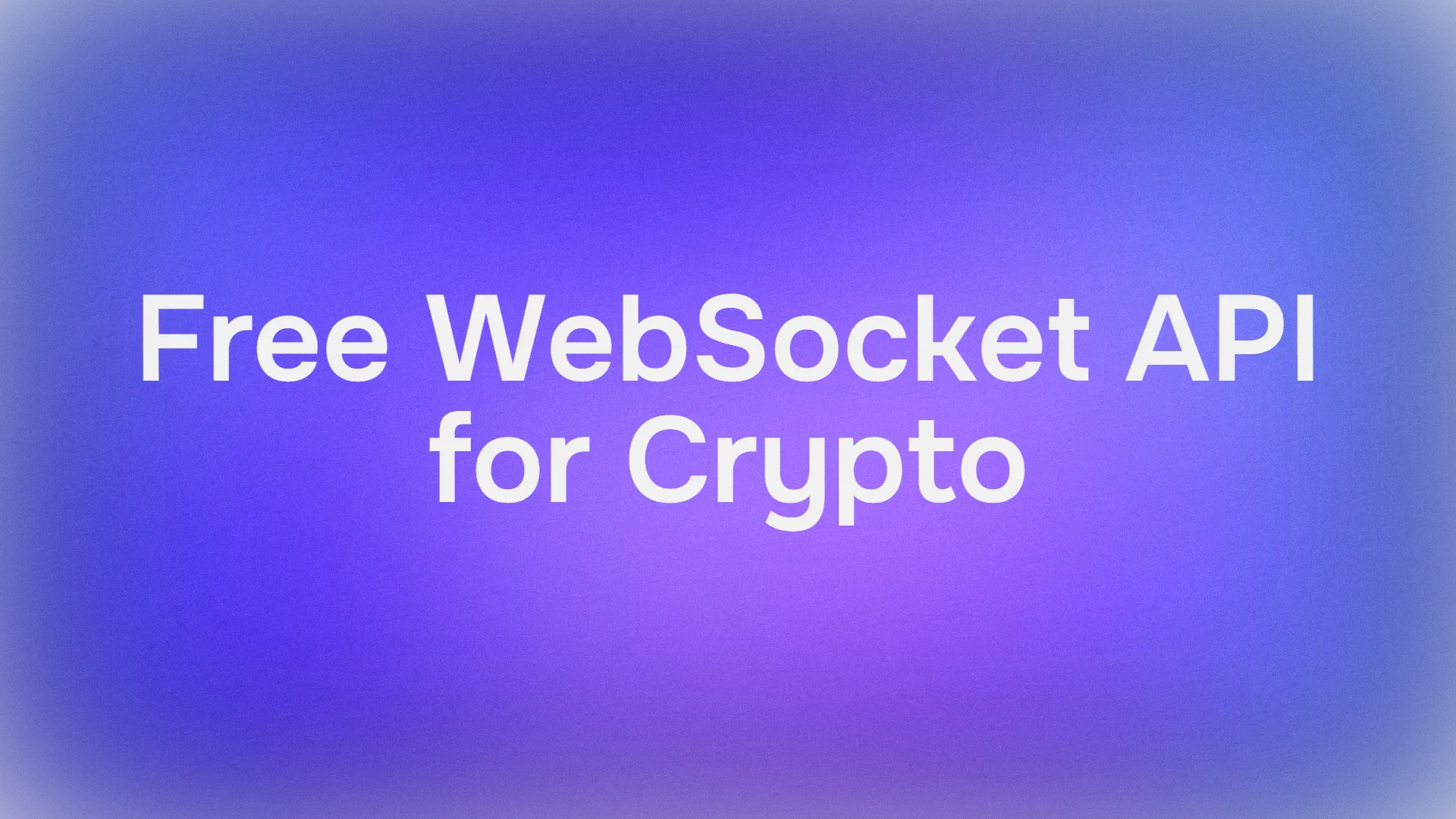If you build crypto apps — dashboards, trading bots, price alert systems, or analytics — using a free WebSocket API for crypto is often the most efficient way to fetch live price updates. Rather than polling every few seconds with REST, a WebSocket connection pushes real-time data the moment prices change. In this article, we’ll explore some of the most popular free WebSocket APIs (including Coinbase Pro WebSocket API, Binance, and CoinCap), how to use them in real-time, and what limitations you should be aware of — such as geo-restrictions, connection limits, or server-side blocking. We also include sample code to get you started quickly.
Want an integrated, All-in-One platform for your Developer Team to work together with maximum productivity?
Apidog delivers all your demands, and replaces Postman at a much more affordable price!
Why WebSocket APIs Matter for Crypto
WebSockets allow a persistent bidirectional connection between client and server — so instead of requesting data repeatedly (polling), the server sends updates as soon as available. This results in:
- Lower latency — price updates arrive in real time.
- Less overhead — fewer repeated requests, efficient bandwidth use.
- Simpler logic — no manual polling loops or rate-limit handling.
For applications like live crypto dashboards, trading bots, or real-time alerts, WebSocket APIs are ideal.
Overview of Major Free WebSocket APIs for Crypto
Here are three widely used, free (public) WebSocket APIs developers often rely on for real-time price/trade data.
1. Coinbase Pro WebSocket API
The public WebSocket feed of Coinbase Pro allows you to subscribe to channels such as ticker, level2, heartbeat, and receive real-time market data for trading pairs.
Key features:
- Public feed — no authentication required for basic market data.
- Channels: real-time ticker (price), order book updates (level2), trades, and more.
This makes Coinbase Pro WebSocket API a go-to for lightweight, real-time price and trade feeds.

2. Binance WebSocket API
Binance offers public WebSocket streams for spot market data: trade streams, ticker streams, order-book depth, and candlesticks, among others.
Key features:
- Streams such as
<symbol>@trade,<symbol>@ticker,<symbol>@depthallow subscribing to specific symbol updates. - No authentication required for public market data streams.
For developers building real-time multi-asset dashboards or trading apps, Binance WebSocket is a strong choice when available.

3. CoinCap WebSocket API
For a simpler, lightweight API focused on price updates, CoinCap provides a public WebSocket endpoint that streams price changes of assets. For example: wss://ws.coincap.io/prices?assets=bitcoin,ethereum returns JSON with latest prices.
Key features:
- Simple format — JSON with asset-price pairs.
- Ideal for quick price tickers or light dashboards, without order-book overhead.

Sample Code to Consume Crypto WebSocket Streams
Here are three sample Python scripts (using websockets and asyncio) for each of the above APIs. In each script pressing Ctrl + C will terminate the loop.
Coinbase Pro WebSocket (BTC-USD ticker)
import asyncio, json, websockets
from datetime import datetime
async def btc_price_monitor():
uri = "wss://ws-feed.exchange.coinbase.com"
print("Connecting to Coinbase Pro WebSocket Feed… Press Ctrl+C to stop.")
async with websockets.connect(uri) as ws:
subscribe = {
"type": "subscribe",
"product_ids": ["BTC-USD"],
"channels": ["ticker"]
}
await ws.send(json.dumps(subscribe))
while True:
resp = await ws.recv()
data = json.loads(resp)
if data.get("type") == "ticker":
price = float(data.get("price", 0))
print(f"[{datetime.now().strftime('%H:%M:%S')}] BTC/USD: ${price:,.2f}")
if __name__ == "__main__":
try:
asyncio.run(btc_price_monitor())
except KeyboardInterrupt:
print("Stopped by user.")

Binance WebSocket (BTC-USDT trade stream)
import asyncio, json, websockets
from datetime import datetime
async def binance_price_monitor():
uri = "wss://stream.binance.com:9443/ws/btcusdt@trade"
print("Connecting to Binance WebSocket… Press Ctrl+C to stop.")
async with websockets.connect(uri) as ws:
while True:
resp = await ws.recv()
data = json.loads(resp)
price = float(data.get('p', 0))
print(f"[{datetime.now().strftime('%H:%M:%S')}] Binance BTC/USDT: ${price:,.2f}")
if __name__ == "__main__":
try:
asyncio.run(binance_price_monitor())
except KeyboardInterrupt:
print("Stopped by user.")

CoinCap WebSocket (Bitcoin price updates)
import asyncio, json, websockets
from datetime import datetime
async def coincap_price_monitor():
uri = "wss://ws.coincap.io/prices?assets=bitcoin"
print("Connecting to CoinCap WebSocket… Press Ctrl+C to stop.")
async with websockets.connect(uri) as ws:
while True:
resp = await ws.recv()
data = json.loads(resp)
if "bitcoin" in data:
price = float(data["bitcoin"])
print(f"[{datetime.now().strftime('%H:%M:%S')}] CoinCap BTC: ${price:,.2f}")
if __name__ == "__main__":
try:
asyncio.run(coincap_price_monitor())
except KeyboardInterrupt:
print("Stopped by user.")
These basic scripts can be extended to subscribe to multiple symbols, integrate with dashboards, or feed data into other services.
Potential Downsides and Limitations to Be Aware Of
While free WebSocket APIs are powerful, there are caveats you should consider:
1. Geo-Restrictions and Server Blocking
Reddit shows that some exchanges may block users based on geographic location. For example, Binance has been known to restrict access to certain regional IPs. If you live in a restricted region, the WebSocket connection may fail. Others have reported Geo-blocking with status codes like 451.
Even for public APIs, if server load is high, the server may throttle or drop connections.
2. Connection Limits & Stability
- Binance: WebSocket connections are valid for a limited time (often 24 hours); you must handle reconnection logic accordingly.
- If your application opens many concurrent connections or subscribes to many symbols, you may hit rate or concurrency limits.
- Occasionally, price updates may pause due to server-side maintenance or restrictions (especially on free / public tiers).
3. Data Quality & Latency
While WebSockets deliver low-latency data, the reliability depends on the exchange’s infrastructure. Network latency, server load, or message batching can affect timing or completeness of data.
4. Limited Historical Data & Features
WebSocket APIs generally deliver live data — they typically do not provide historical data (that often comes from REST or separate endpoints). If you need OHLC history, volume charts, or long-term data, you often need to combine WebSockets with REST endpoints or external data providers.
Frequently Asked Questions (FAQ)
Q1. Are WebSocket APIs for crypto really free?
Yes — for public market data, many exchanges like Coinbase Pro, Binance, and services like CoinCap offer free WebSocket streams. However, “free” doesn’t mean unlimited — they may enforce rate limits, connection limits, or geo-restrictions.
Q2. Do I need API keys or authentication for public WebSocket feeds?
For public data (e.g. Coinbase, price tickers, trades, order book), generally no. For private data (your account info, private orders), you would need API keys. For example, Coinbase Pro requires authentication for user-specific feeds, but not for basic market data.
Q3. What happens if I lose connection or the server disconnects?
You need to implement reconnection logic — many WebSocket APIs disconnect after certain periods (e.g. 24h for Binance), or if ping/pong heartbeats fail, or under heavy load.
Q4. Can I track multiple cryptocurrencies at once?
Yes — by subscribing to multiple symbols (or assets) in a single WebSocket connection (if supported), or by opening multiple connections. For example, CoinCap allows streaming multiple assets in one URL query: ?assets=bitcoin,ethereum,litecoin.
Q5. Are there privacy or security concerns when using public WebSockets?
Since public streams deliver only public market data, there is little privacy risk. But if you also use private/authenticated feeds, you must secure your API keys. Additionally, always run WebSocket clients over secure connections (wss://) to avoid MITM attacks.
Conclusion
Using a free WebSocket API for crypto is a powerful, efficient way to stream live market data — ideal for dashboards, trading bots, alert systems, or analytics tools. Exchanges like Coinbase Pro, Binance, and providers like CoinCap offer reliable, public WebSocket feeds that require no authentication for basic price and trade data.
That said, be mindful of limitations: geo-restrictions, rate limits, connection timeouts, possible blocking, and data quality issues. For robust applications, build reconnection logic, monitor for errors, and gracefully handle outages. And where needed — especially for historical data or private account info — combine WebSocket streams with REST APIs or official data endpoints.
If you’re looking to build a live crypto application today — a price ticker, trading bot, or analytics dashboard — starting with these free WebSocket APIs is a great way to get real-time data with minimal overhead.
Want an integrated, All-in-One platform for your Developer Team to work together with maximum productivity?
Apidog delivers all your demands, and replaces Postman at a much more affordable price!



